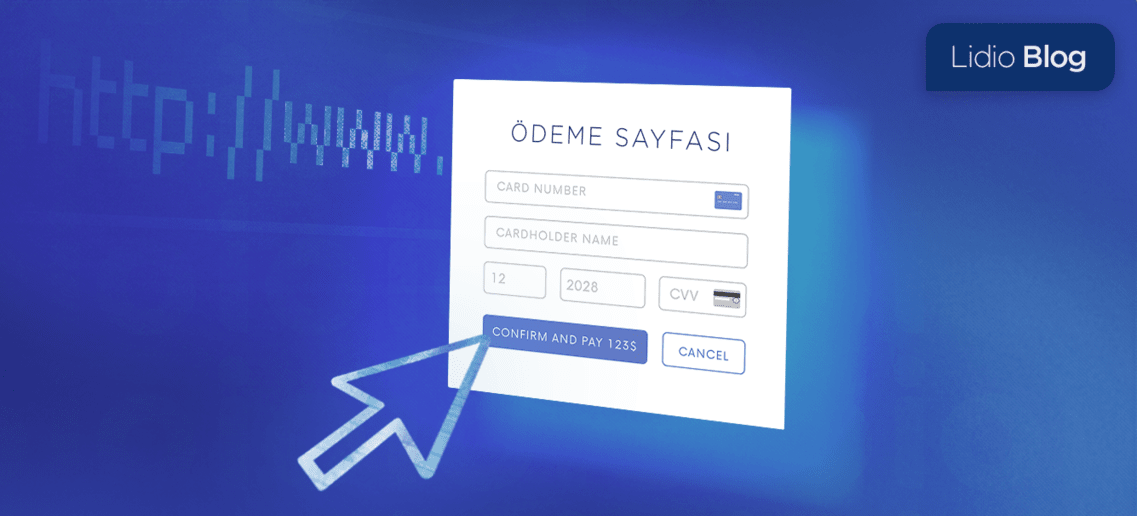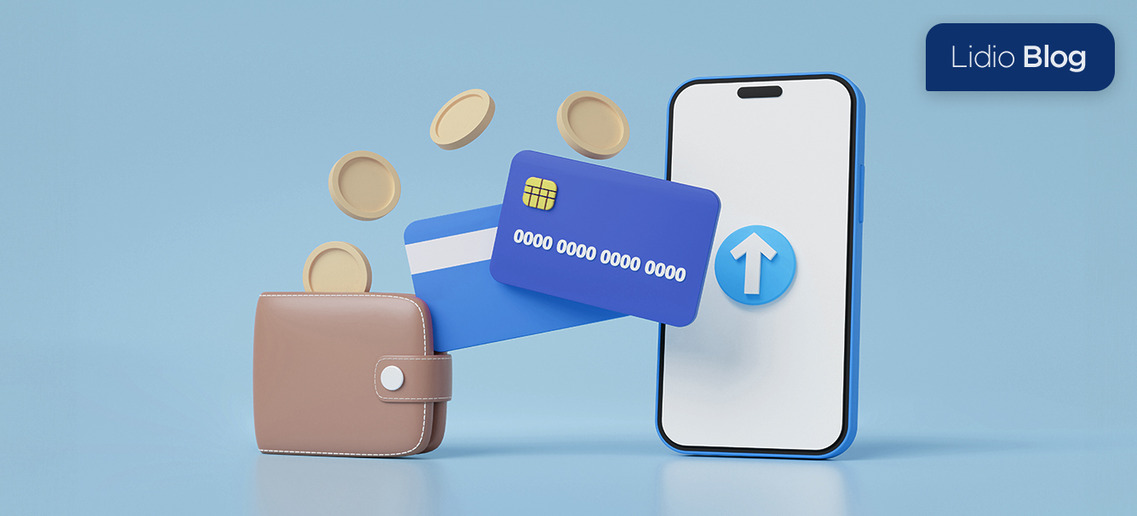
Tek Tıkla Ödeme Nedir E-Ticarette Dönüşüm Oranlarını Artırmanın Yeni Yolu
Tek Tıkla Ödeme Nedir E-Ticaret’te Dönüşüm Oranlarını Artırmanın Yeni Yollarını Keşfedin...
Güvenli online alışverişin şifresi: 3D Secure Ödeme nedir, ne işe yarar öğrenmek için blog yazımıza göz atın!

Online alışveriş sistemleri, her geçen gün daha fazla kullanıcı tarafından tercih edilmektedir. Sanal pazaryerlerine ve kurumsal e-ticaret sitelerine yönelik ilgi, internette ödeme güvenliği konusundaki endişeleri de beraberinde getirir. E-ticaretle yeni tanışan pek çok tüketici, sanal alışverişlerde kredi ve banka kartıyla ödeme yapmanın güvenli olup olmadığı noktasında şüpheye düşebilir. Buna karşılık herhangi bir e-ticaret sitesinin güvenli olduğunu anlamak oldukça kolaydır. 3D Secure ödeme seçeneğine sahip olan internet siteleri, kredi kartı detaylarınızın ve kişisel bilgilerinizin maksimum seviyede güvende kalmasını sağlar. Peki 3D Secure nedir, sahteciliği nasıl önler? İşte 3D Secure ödeme yöntemi hakkında merak edilen tüm detaylar…
XML tabanlı bir güvenlik protokolü olan 3D Secure, internet sahteciliğinin önüne geçmek için kullanılır. İnternette en sık karşılaşılan sahtekârlık yöntemi, kredi kartı bilgilerinin ele geçirilmesidir. Korsan siteler aracılığıyla kredi kartınızın ya da banka kartınızın ön yüzündeki numaraların ve kullanıcı şifresinin ele geçirilmesi, hesabınızdaki nakit paranın çekilmesi ya da kredi limitinizin çevrim içi alışverişlerde izniniz olmaksızın kullanılması için yeterlidir. Bu durum da kredi ve banka kartlarının internetten yapılan alışverişlerde kullanılmasını riskli hâle getirir. Bu riski ortadan kaldırmak ve dileyen herkesin internetten güvenli alışveriş yapabilmesini sağlamak isteyen finans kuruluşları, 3D Secure sistemini tercih eder. 3D Secure ödeme sistemi, e-ticaret sitelerine ek olarak kurulur ve kişisel bilgiler bu alana girilir. Bu sisteme sahip olan e-ticaret siteleri; kredi kartı numaranızı, adınızı, soyadınızı ve girdiğiniz şifreyi göremez. Bilgiler, yalnızca birlikte çalışılan finans kuruluşuna ait eklentiye girilir ve bu sayede internet sahteciliğinin önüne geçilir.
3D Secure ödeme sisteminin en önemli özelliği, çok katmanlı bir güvenlik sistemine sahip olmasıdır. 3 boyutlu koruma sağlayan 3D Secure sistemi üzerinden alışveriş ve ödeme yapılabilmesi için finans kuruluşuna kayıtlı cep telefonunuzun da kullanılması gerekir. Banka bilgileri ve kişisel bilgiler eksiksiz olarak girildikten sonra sistem, otomatik olarak cep telefonunuza onay kodu gönderir ve bu kodu açılan sayfaya girmenizi ister. Onay kodu, gerçekleştireceğiniz satın alma işleminin güvenliğini sağlayan faktörlerden biridir. Kredi kartı numaranızın ve kişisel bilgilerinizin başkaları tarafından ele geçirilmesi durumunda sahtecilik mağduru olmanızı engelleyen bu kod, yalnızca 2 ila 3 dakika boyunca aktif kalır ve belirtilen süre içinde 3D Secure ödeme sayfasına kodun girilmesi gerekir. Onay kodunun girilmemesi durumunda işlem iptal olur ve para transferi gerçekleşmez. 3D Secure sistemi, kod sayesinde işlemi gerçekleştirmek isteyen kişinin kartın gerçek sahibi olduğunu teyit eder ve böylece işlem güvenliğinizi maksimum seviyeye taşır.
3D Secure sistemi, e-ticaret siteleri için son derece önemli bir göstergedir. Ödeme yöntemlerini güvenli bulmayan pek çok tüketici, ödeme sayfasına kadar geldikten sonra işlemi yarıda bırakarak e-ticaret sitesini terk edebilir. Eğer e-ticaret siteniz varsa ve satışlarınızı artırmak istiyorsanız 3D Secure sistemini sitenize entegre etmeniz ve bu sayede site ziyaretçilerine kendilerini güvende hissettirmeniz büyük önem taşır. Siz de e-ticaret sitenizde çeşitli yöntemlerle ödeme alabilmek için Lidio’yu tercih ederek diğer güvenlik önlemleriyle birlikte 3D Secure sisteminden de yararlanabilir ve böylece sitenizin satışlarını yükseltebilirsiniz. Lidio ile düşük komisyon ücretlerinden ve hızlı tahsilat avantajlarından da yararlanabilir, e-ticaret sitenizin ticari işlemlerine büyük bir esneklik kazandırabilirsiniz. Lidio’nun sunduğu tüm ürünler hakkında bilgi almak ve iletişime geçmek için tıklayın!

Tek Tıkla Ödeme Nedir E-Ticaret’te Dönüşüm Oranlarını Artırmanın Yeni Yollarını Keşfedin...

CVV Kodu Nedir? Neden önemlidir? Öğrenmek için blog yazımızı zirayet edin!...

Provizyon Nedir? Provizyon Ne İçin Kullanılır? Öğrenmek için blog yazımızı ziyaret edin!...

QR Kod Nedir? QR Kod Ne İçin Kullanılır? Öğrenmek için blog yazımızı zirayet edin!...

Linkle ödeme nedir, linkle ödeme sistemi nasıl çalışır, avantajları nelerdir, ve linkle ödeme nasıl alınır merak ediyorsanız detaylı bilgi için blog yazımızı okuyun!...

Ödeme sistemleri, online mağazalarınızda müşterilerinizden ödeme almak için kullanılan finansal teknolojilerin tümüne verilen addır. Detaylı bilgi için web sitemizi ziyaret edin!...

Ödeme sayfası nedir, sayfa güvenliği nasıl anlaşılır, ödeme sürecinin güvenli olduğundan emin olma yolları nelerdir hakkında detaylı bilgi için blog yazımızı okuyun. ...

Startup Nedir? Startup nasıl kurulur öğrenmek için blog yazımızı zirayet edin!...

Check Out Nedir? Neden önemlidir öğrenmek için blog yazımızı zirayet edin!...

Dijital Cüzdan Nedir? ? Neden önemlidir öğrenmek için blog yazımızı zirayet edin!...

E-Tahsilat Nedir? E-Tahsilat Ne İçin Kullanılır? Öğrenmek için blog yazımızı zirayet edin!...

İnternet alışverişinde tüketicilerin hakları nelerdir, kabul edilen sözleşmeler neyi ifade eder detayları ile öğrenmek için blog yazımıza göz atın!...

Sanal POS hakkında tüm bilmeniz gerekenler: Öğrenmek için blog yazımıza göz atın!...

Sepeti terk etme oranları işletmeler için neden önemlidir, nasıl minimize edilir öğrenmek için blog yazımıza göz atın!...

Geleneksel ödemelerden açık bankacılığa finansal serbestleşme nedir ve neden önemlidir öğrenmek için blog yazımıza göz atın!...

Uluslararası ödemeler nasıl gerçekleştirilir, hangi yöntemler kullanılır öğrenmek için blog yazımıza göz atın!...

Ödeme alma sürecinde tahsilatları tek ekrandan yönetmek işletmelere ne gibi avantajlar sağlar öğrenmek için blog yazımıza göz atın!...

ERP nedir, POS ve hesap hareket takibi nasıl yapılır öğrenmek için blog yazımıza göz atın!...

Issuer, Acquirer ve PSP kavramları nelerdir, PSP seçimi neden önemlidir öğrenmek için blog yazımıza göz atın!...

İnternetten yapılan alışverişlerde dolandırıcılığa karşı kullanılan güvenlik önlemleri nelerdir öğrenmek için blog yazımıza göz atın!...

E-ticarette online satış yapmanın püf noktaları nelerdir, tüketici deneyimi nasıl iyileştirilir öğrenmek için blog yazımıza göz atın!...

Açık bankacılık nedir, işletmelere nasıl avantajlar sağlar öğrenmek için blog yazımıza göz atın!...

Güvenli online alışverişin şifresi: 3D Secure Ödeme nedir, ne işe yarar öğrenmek için blog yazımıza göz atın!...

Kredi kartı, kapıda ödeme, havale/kredi, mobil ödeme gibi alternatif ödeme yöntemleri nelerdir, nasıl kullanılır öğrenmek için blog yazımıza göz atın!...